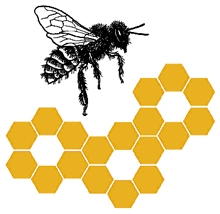
A National Research and Extension Initiative to Reverse Pollinator Decline
This is part of an ongoing series of updates from the Managed Pollinator CAP. Additional installments can be found at the:
More information about the CAP can be found at:

Keith S. Delaplane, Professor and CAP Director, University of Georgia
by Keith S. Delaplane, Professor and CAP Director, University of Georgia
CAP Updates: 23
- Jointly published in








